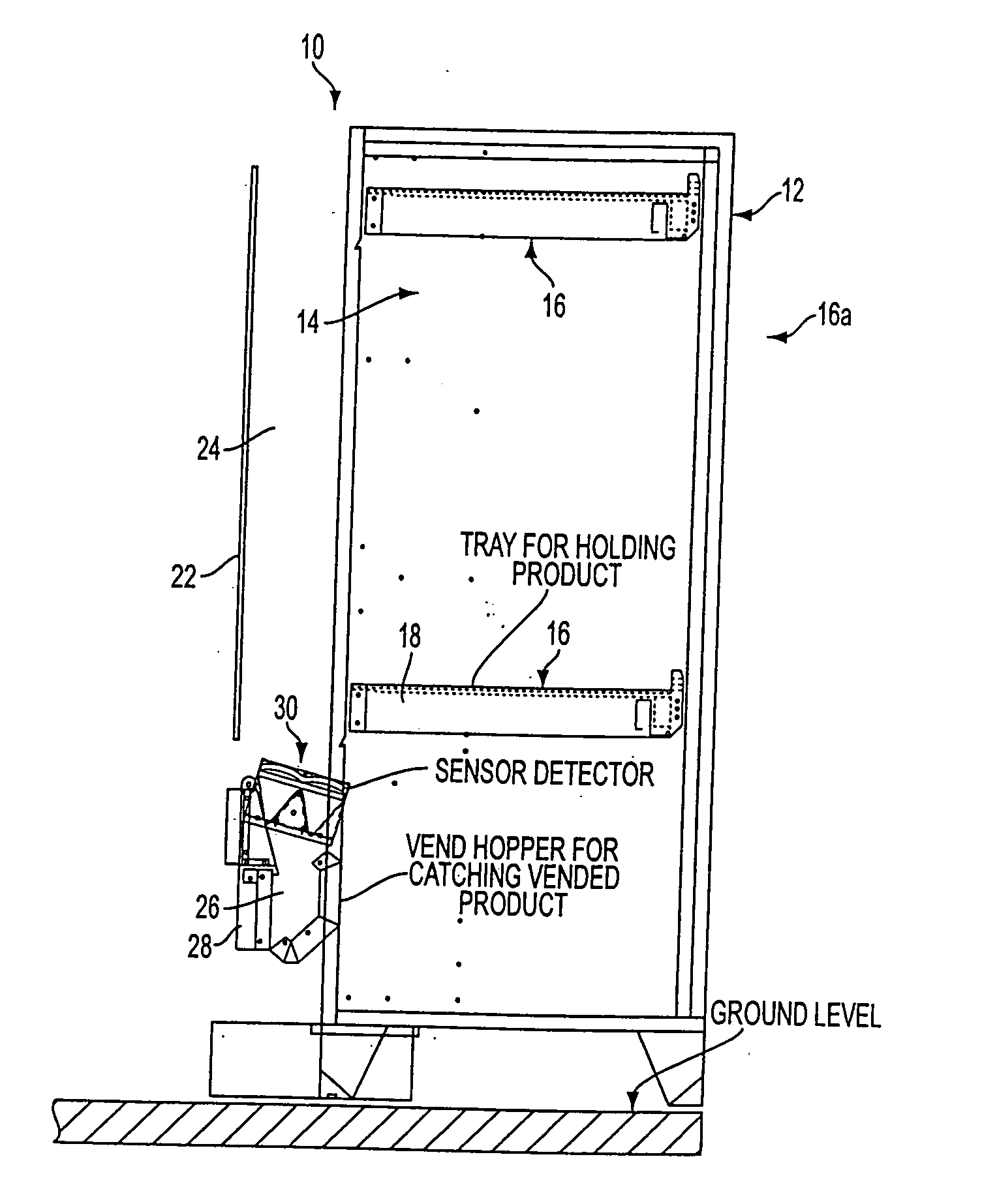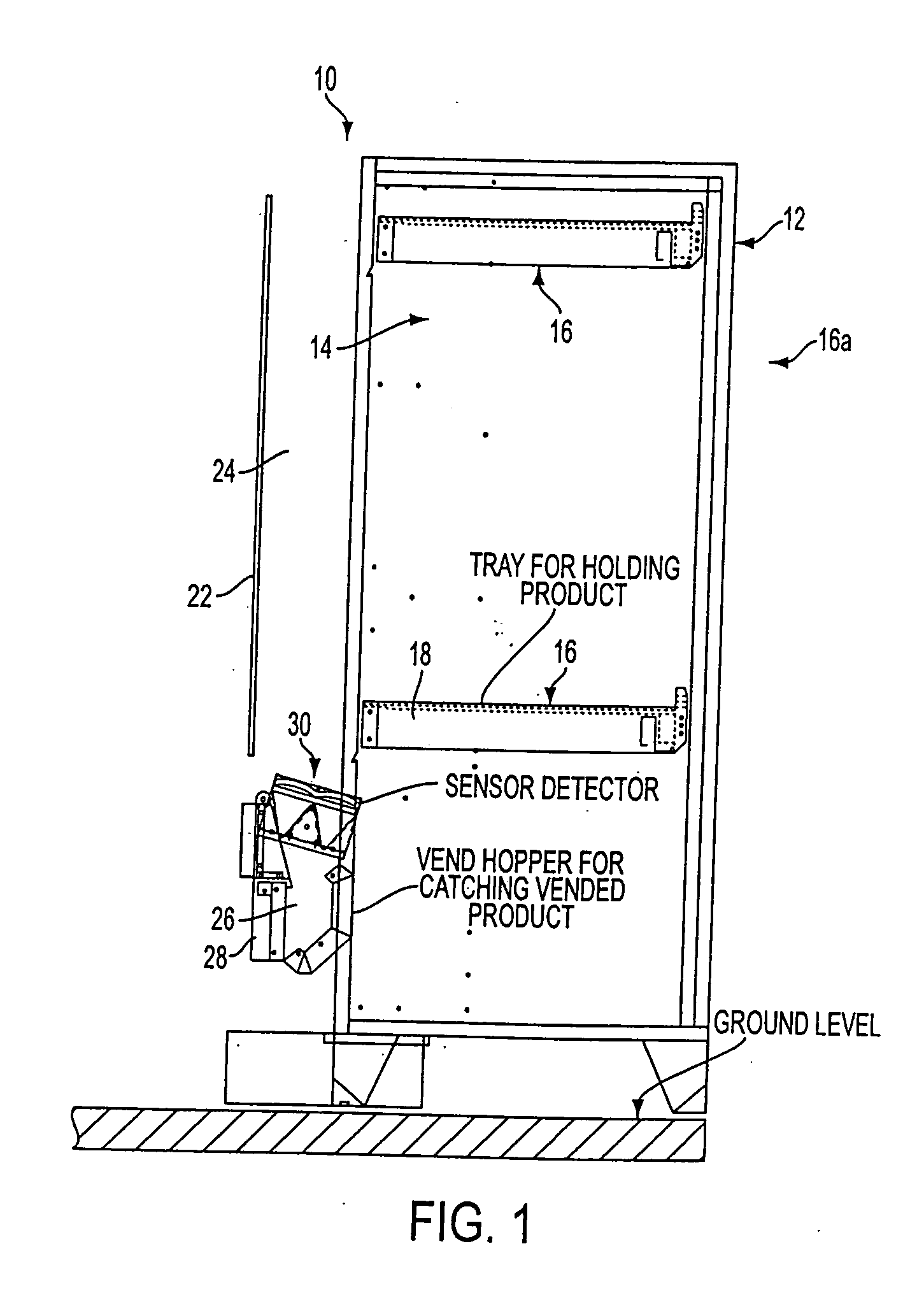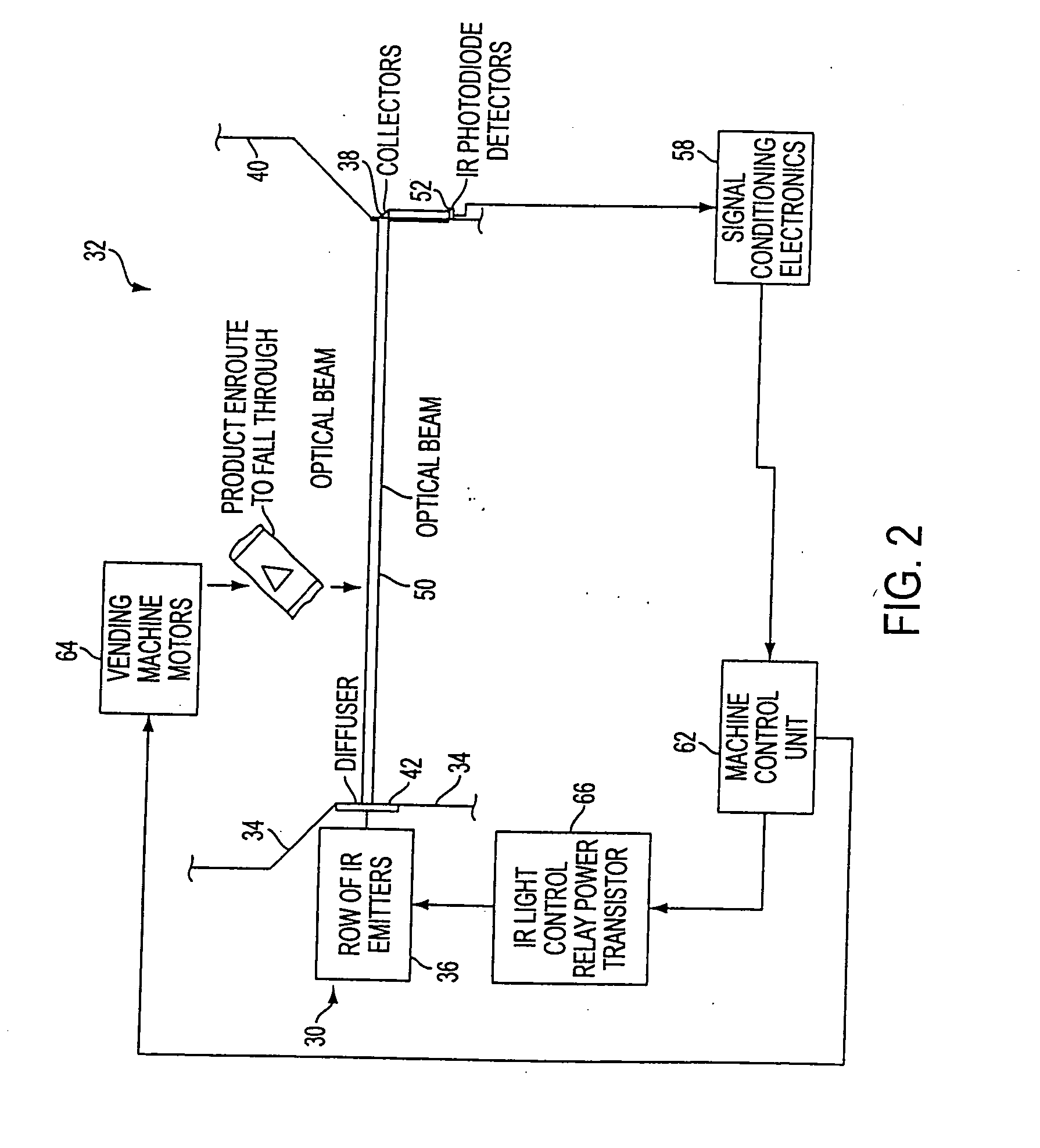Optical vend-sensing system for control of vending machine
a technology of optical sensing and vending machine, which is applied in the direction of instruments, specific gravity measurement, de-stacking articles, etc., can solve the problems of increasing the cost of adding sensors, complicating the design of glass-front vending machines, and increasing the cost of providing reliable vending
- Summary
- Abstract
- Description
- Claims
- Application Information
AI Technical Summary
Benefits of technology
Problems solved by technology
Method used
Image
Examples
Embodiment Construction
[0045] An exemplary vending machine in which the optical vend-sensing system of the invention may be provided and used, is schematically illustrated at 10 in FIG. 1. Much of the conventional structure has been omitted. In general, the vending machine 10 is shown including a cabinet 12 having opposite sidewalls, a back wall, a top wall and a bottom wall which cooperatively define a forwardly facing cavity 14 arranged to have a plurality of tray assemblies 16 mounted therein at a plurality of vertically spaced levels. In general, the vending machine has an electromechanical dispensing unit 16a. In the example illustrated in FIG. 1, the electromechanical dispensing unit 16a includes the tray assemblies 16. Each tray assembly 16 has a plurality of motorized horizontally arranged spirals which are spaced from one another widthwise of the tray, and each of which extends longitudinally in a front-to-rear depthwise direction of the tray. Each spiral plugs into the driving chuck of a respect...
PUM
 Login to View More
Login to View More Abstract
Description
Claims
Application Information
 Login to View More
Login to View More - R&D
- Intellectual Property
- Life Sciences
- Materials
- Tech Scout
- Unparalleled Data Quality
- Higher Quality Content
- 60% Fewer Hallucinations
Browse by: Latest US Patents, China's latest patents, Technical Efficacy Thesaurus, Application Domain, Technology Topic, Popular Technical Reports.
© 2025 PatSnap. All rights reserved.Legal|Privacy policy|Modern Slavery Act Transparency Statement|Sitemap|About US| Contact US: help@patsnap.com



